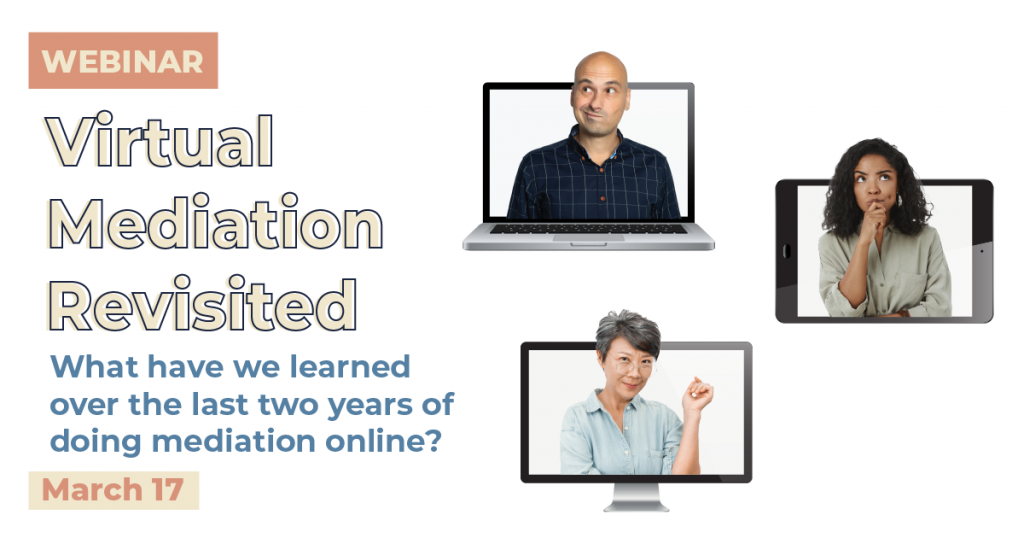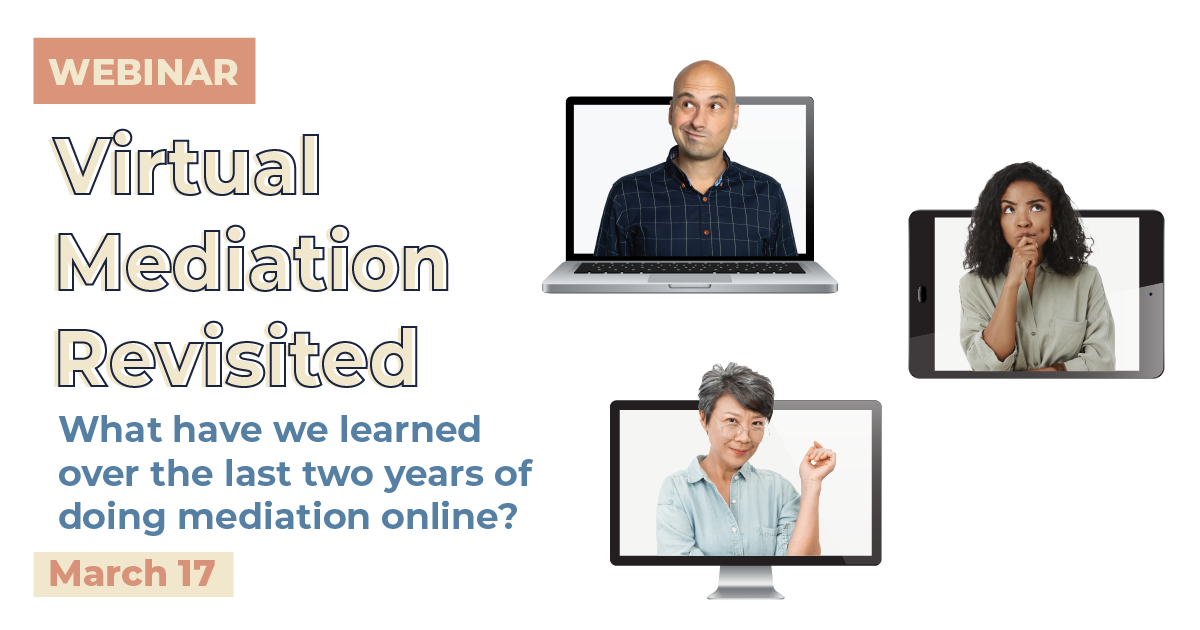What have we learned in the past two years of mediating online?
By Catherine Conner and Katherine Miller
As we moved mediation online in the early days of the pandemic, many of us believed that we would return to in-person sessions within a few weeks or months. However, as quarantine and isolation stretched over two years, our virtual realities became essential to our conflict work. As we reflect on the opportunities and challenges of holding difficult conversations online, we can clearly recognize that the pandemic has fundamentally transformed how we work with conflict.
Mediating online is incredibly convenient. When all parties are not required to be at a physical location, it is easier to make online meetings fit into hectic schedules. We found more opportunity to customize the cadence of our time with parties and shorter follow-up meetings are less of a hassle when people can connect from almost anywhere, literally. While some people prefer the physical presence of a mediator, which can add a protective element, many people feel much safer in their own environment, where they can work through challenging emotions without having to be physically near other people. When people are physically distant, it does become harder for the mediator to read the feel of a room, or be able to observe body language; although, we find in online mediation, we are better able to discreetly read micro-expressions on parties’ faces.
Not having body language and the penumbra of a person’s energy may be some of the downsides to virtual mediation; however, we gain a perspective from getting to know people in a different way. For us, getting to know people on a deeper level was one of the most surprising outcomes of online sessions. People’s surroundings can create a sense of connection between each other—a cat walking across a computer screen can offer some levity in a tense moment. The presence of pets during a session can also be comforting for people, offering opportunities for icebreakers, and leading to more personal and less threatening exchanges. Our expectations for virtual mediation were not very high early; however, since our aptitude for technology increased during the pandemic, we have become more resistant to Zoom fatigue, follow up has become easier since everything is digital, and there are an abundance of opportunities resulting from our improved digital skills.
The pandemic obliged us to ascend the technological learning curve—which can be much steeper for some people—and little did we know that “tech support” would become part of our job description. We have worked through countless “you’re muted” situations, helped parties figure out their cameras, and have navigated internet disconnections and device woes. We have also grappled with the conundrum of where to look when you’re talking during an online session.—if you’re looking into your camera, then it looks like you’re really looking at the people, but then you don’t see how what you’re saying might land. In virtual mediation, we also find it harder to scribe, use a whiteboard, or work with charts in the online environment.
Like so many things in our world, conflict work is multi-faceted and full of caveats for all the different people we work with and there is not one perfect environment for mediation. While the pandemic may have forced many of us out of our comfort zones, we now have an expanded set of skills and experiences to be able to connect with people in more spaces and on different levels. Even as we slowly return to holding sessions in our offices, we realize that our virtual realities are now woven into our physical ones and we foresee hybrid approaches to conflict resolution becoming more of the norm, rather than the exception.
Join us March 17 for an engaging session with the authors and mediation experts.


